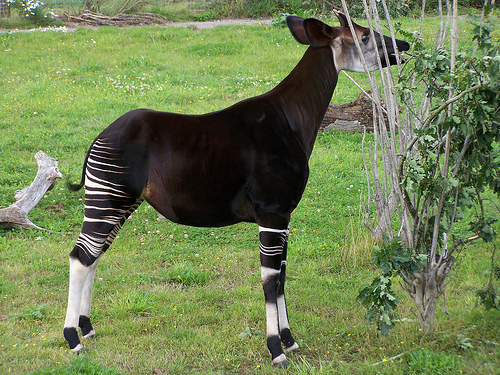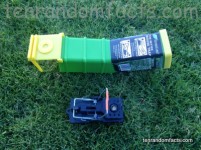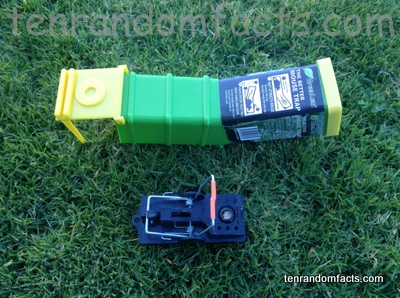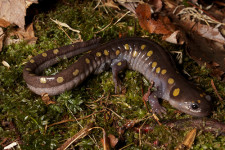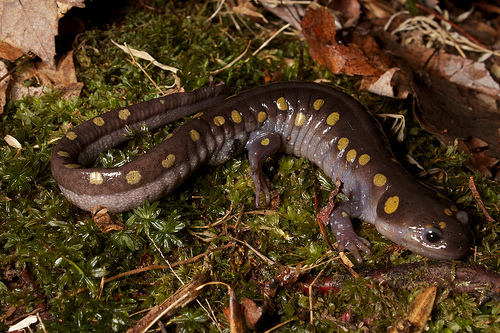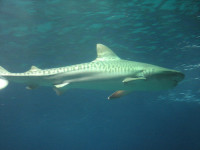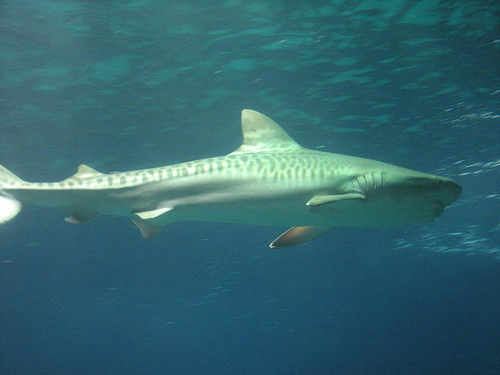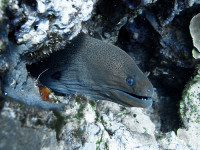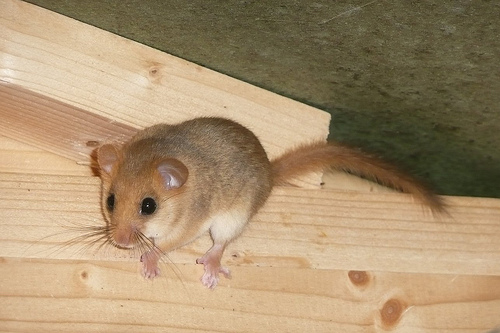
Okapis are weird and wonderful creatures.
- Okapis are solitary mammals that are endemic to central Africa, in the Democratic Republic of the Congo’s rainforest habitats, and they are a prominent symbol of the country.
- Okapis have fur coloured red to brown, and the legs are striped black and white like a zebra.
- ‘Okapis’ are also known as ‘forest giraffes’ and ‘zebra giraffes’, and have the scientific name Okapia johnstoni.
- Okapis are one of two living species from the family Giraffidae, the family of giraffes, and they have a longer neck than other similar shaped animals, and the males have short horns that look similar to those of a giraffe.
- An okapi has a long tongue that can be up to 45 centimetre (18 inches) long, that is used for face cleaning and grabbing vegetation.
Okapi
Image courtesy of David/Flickr
- Okapis range from 1.5 to 2 metres (4.9 to 6.6 feet) in height and 200 to 350 kilograms (440 to 770 pounds) in weight.
- Okapis are shy creatures that live in remote areas, and are rarely seen in the wild by humans, and they have a lifespan of around 20 to 30 years.
- Okapis eat only vegetation, including leaves, fruit, fungus and grass, although they also consume red coloured clay for its mineral and salt content.
- Okapis are a protected species, and due to dwindling numbers by poaching and habitat loss, in 2013 they were classified as endangered.
- Around 175 okapis can be found in captivity in zoos across the globe, some of which are involved in their conservation.
Bibliography:
Okapi, 2014, A-Z Animals, http://a-z-animals.com/animals/okapi/
Okapi, 2014, Wikipedia, http://en.wikipedia.org/wiki/Okapi





